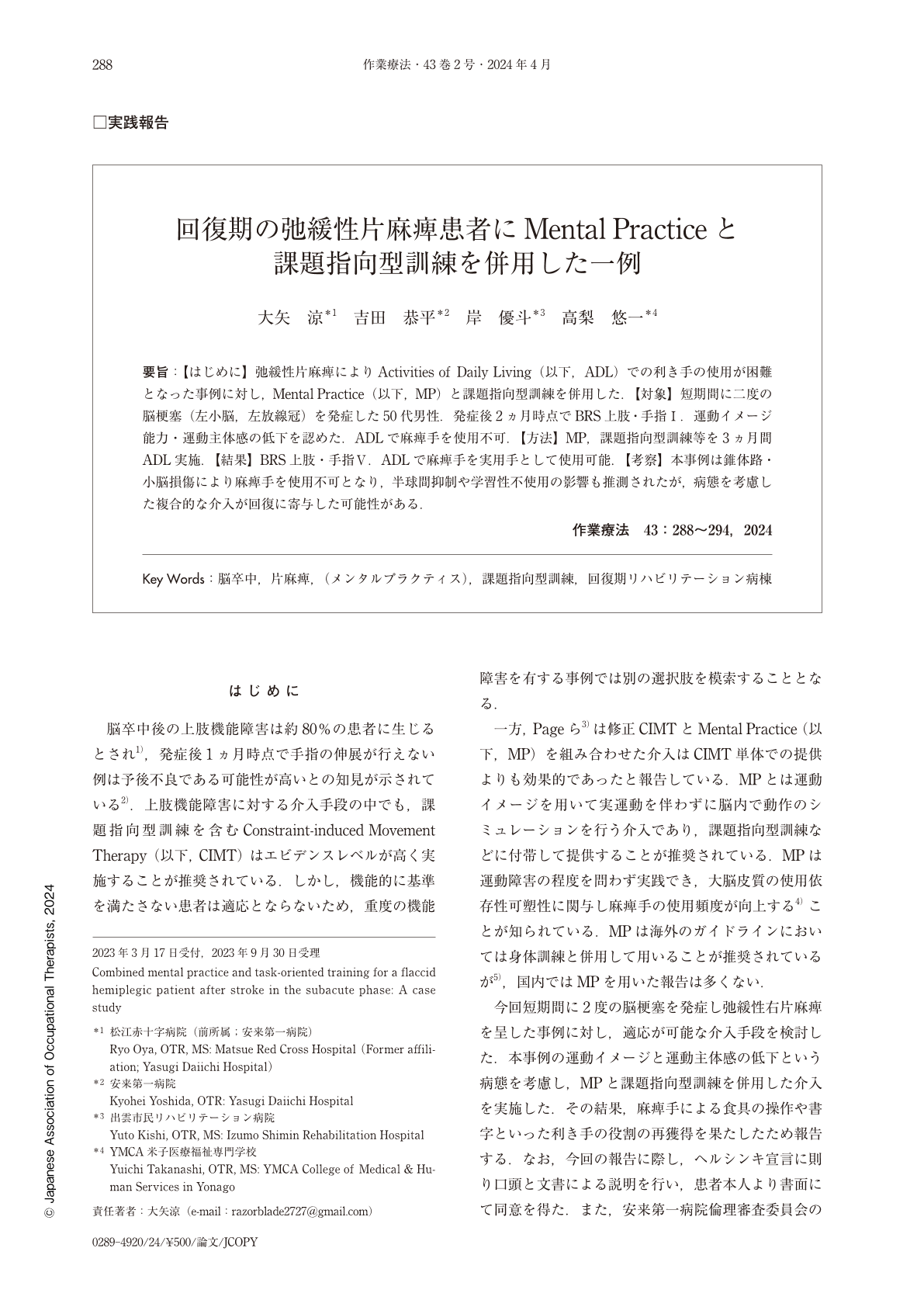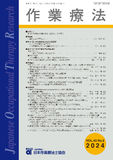Japanese
English
- 販売していません
- Abstract 文献概要
- 1ページ目 Look Inside
- 参考文献 Reference
要旨:【はじめに】弛緩性片麻痺によりActivities of Daily Living(以下,ADL)での利き手の使用が困難となった事例に対し,Mental Practice(以下,MP)と課題指向型訓練を併用した.【対象】短期間に二度の脳梗塞(左小脳,左放線冠)を発症した50代男性.発症後2ヵ月時点でBRS上肢・手指Ⅰ.運動イメージ能力・運動主体感の低下を認めた.ADLで麻痺手を使用不可.【方法】MP,課題指向型訓練等を3ヵ月間ADL実施.【結果】BRS上肢・手指Ⅴ.ADLで麻痺手を実用手として使用可能.【考察】本事例は錐体路・小脳損傷により麻痺手を使用不可となり,半球間抑制や学習性不使用の影響も推測されたが,病態を考慮した複合的な介入が回復に寄与した可能性がある.
[Introduction] We report a case of flaccid hemiplegia in which the patient had difficulty using his dominant hand for Activities of Daily Living (ADLs). [Subject] A man in his 50s who had two cerebral infarctions (left cerebellum and left corona radiata) in a short period of time. Initially, he had difficulty using his dominant hand for ADL due to flaccid hemiplegia. [Methods] Mental practice, video observation task, task-oriented training, and praise from others were performed for 3 months. [Result] The affected hand can be used as the dominant hand in ADL due to functional improvement of the affected hand. [Discussion] The patient had difficulty using his affected hand due to damage to the pyramidal tract and cerebellum. Although interhemispheric inhibition and learned non-use of the affected hand were also assumed to have affected the patient's recovery, it is possible that combined interventions contributed to the patient's recovery.

Copyright © 2024, Japanese Association of Occupational Therapists. All rights reserved.


